Ants are hungry for sugar and oil. An international team led by Czech scientists revealed insect tastes in the remote forests of tropical mountains
The decline of insect populations has attracted worldwide interest in times of global warming and changing environment, but we have only rudimentary knowledge about the biodiversity and abundance of insects in the high mountains in tropical regions. Even what nutrients limit insects in nature is still not well understood. This knowledge is important because of the increasingly frequent climatic extreme events that change the availability of food resources. An international team of scientists from six countries, led by researchers from the Biological Centre of the Czech Academy of Sciences (CAS), conducted a unique field experiment on three tropical high mountains, in some of the last virgin forests in the world. In this intercontinental work, scientists offered ants different food in order to find out, which nutrients these important insects prefer most in nature. The results, which among other things led to the discovery of more than a hundred undescribed species of ants, were published in the journal Global Ecology and Biogeography.
Known as “ecosystem engineers”, ants are often studied as a general model for answering the question of how insects respond to environmental changes. These socially living creatures are among the most common terrestrial invertebrates, reaching their greatest numbers and diversity in tropical forests. "Until now, there has been no intercontinental comparison of the diversity of ants of different tropical mountains. And very little was known about what nutrients ants lack in their environment," says Petr Klimes from the Biology Centre of CAS, who led the international study. "Everyone knows that unwanted ant visitors in the kitchen like sugar the most, but we wanted to find out if this is also the case in tropical nature. Different ant species play various ecological roles in the forest. Some species hunt other insects, others feed mainly on nectar and honeydew, and some are rather omnivores and fulfil the role of natural gravediggers," explains Petr Klimes.
To answer these questions, scientists conducted a unique experiment in three tropical mountains, each on a different continent. All belonged to some of the last high mountain ranges with original forests: Mt. Wilhelm in Papua New Guinea in Oceania, Kilimanjaro in Africa and the South American Cordillera. The researchers offered the ants different food sources. From the foothills to the tops of the mountains, they placed more than 2,300 vials, each containing a solution with one of six nutrients: sugar, salt, olive oil, amino acid, honey and water. The researchers left each bottle open so that it was freely accessible to worker ants foraging on the forest ground. "With such a quantity of baits, we climbed through difficult terrain up to an altitude of almost 4,000 meters. Climbing through the dense jungle with a bag full of food for ants really gave us a hard time," recalls Papuan native researcher Jimmy Moses, the first author of the study, and a former doctoral student at the University of South Bohemia in Ceske Budejovice.
First author of the study and leader of the Papuan expedition, Jimmy Moses (right) pictured with his assistant while preparing the experiment in the montane forest of Mt. Wilhelm. Papua New Guinea. Photo: Tom Fayle
Predatory ants live in the mountains, sweet-loving ones in the lowlands
The bait experiment revealed how the ants populations and their food preferences change with increasing elevation. The number of ants significantly declined towards higher, cooler locations, where their foraging activity decreased by approximately 25% for every 500 meters of elevation. On all continents, more predatory ant species were observed towards the mountaintops, while species feeding on sweet honeydew and nectar were more abundant in the lowlands. Furthermore, research has shown that ants like sugar and oil the most, and this was the case once more on all the investigated mountains.
But the surprise was that the tastes of the ants changed differently with the environmental conditions on each mountain, depending on whether it was raining or dry, or whether they were lowland or mountain species. "We observed a significant increase in the activity of ants in South America during the dry season, when they increased their interest in oil and salt in their diet, while in Papua it was exactly the opposite," says study co-author Yvonne Tiede of Philipps-Universität in Marburg, who led the expedition in the Cordillera. "The reason may be that in the dry season there is less food containing these nutrients in the forests of South America, while on the Papuan island there are more resources outside the rainy season," adds Petr Klimes. Contrary to the ecological theory that predators should lack more sugars in their diet, while nectar-feeding species should lack amino acids and salts, no such relationships were observed.
One of the experimental baits with sugar solution, visited by hungry ants. Photo: Yvonne Tiede.
Most of the 183 species of ants observed are still unknown to science
Another interesting finding of this study was the species diversity of the ants itself. In total, the scientists observed 183 species of ants in the experiment. That is almost twice as many as live in the entire Czech Republic. Experts have not been able to assign a Latin species name to most of them, so they are probably yet to be described species. Moreover, each of the species was recorded only on one of the three investigated mountain ranges. This shows how little we still know about the invertebrate animals of the tropical mountains, where the forests are rapidly decreasing due to increasing human activity.
"As the climate changes and pristine vegetation disappears, we cannot yet reliably predict how insects will react to environmental changes. Therefore, we need more research also from disturbed forests and plantations," says study co-author Marcell Peters from the University of Wuerzburg. "So far, we have only looked at disturbed forests and the issue of food preferences at Mt. Kilimanjaro, and the diversity of ants and the nutrients they use has declined there. This is an alarming finding. The next step is to answer whether similar relationships apply to other tropical mountains," concludes Marcell Peters.

View of the virgin forests of one of the studied mountain ranges in the Cordillera. Ecuador, South America. Photo: Nina Farwig
The study is freely available (open access) at: https://onlinelibrary.wiley.com/doi/full/10.1111/geb.13757
Moses J., Peters M.K., Tiede Y, Mottl O., Donoso D., Farwig N., Fayle T. M., Novotný V., Sanders N., Klimeš P. (2023) Nutrient use by tropical ant communities varies among three extensive elevational gradients: a cross-continental comparison Global Ecology and Biogeography DOI: 10.1111/geb.13757 (Authors from the Biology Centre CAS in bold)

South American expedition to...
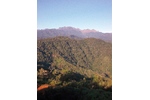
Papua New Guinea
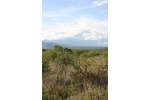
Kilimanjaro
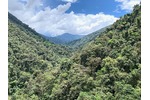
Cordillera
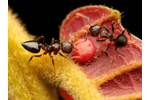
Ants love sweet
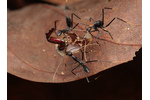
Cleaning up the remains of a...
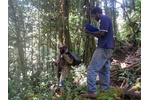
Papuan expedition
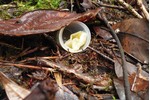
Baits for hungry ants














